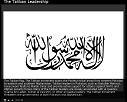|
|
|
Baitullah Mehsud from a recent Taliban video. |
Baitullah Mehsud, the leader of the Pakistani Taliban and the commander in South Waziristan, spends more money on yearly operations than al Qaeda spent year prior to the Sept. 11, 2001, attacks, according to the governor of the Northwest Frontier Province.
“He is spending between Rs 2.5 – 3 billion [about $45 million] yearly on procuring weapons, equipment, vehicles, treating wounded militants and keeping families of killed militants fed,” Governor Owais Ahmed Ghan told Daily Times. Ghan said the money could not have come from donations alone; the opium trade in Afghanistan is filling Baitullah’s coffers.
Most of the money is spent on “the means of communication – vehicles, fuel and equipment – and then on treatment of wounded fighters, and lastly on keeping the killed comrades’ families fed,” Zulfiqar Mehsud, an aide to Baitullah, told Daily Times last March. “We have to change vehicles after we use them for a year. Every vehicle at our disposal must be in top condition because we have very rough and tough roads and hilly areas and cannot afford to keep vehicles that are not as fit as our job requires.”
Baitullah is thought to operate a force of more than 20,000 fighters, some of whom are professionally trained. His forces beat back Pakistani Army assaults in 2007 and 2008, and overran two military outposts in South Waziristan. His fighters also captured an entire Pakistani Army company without firing a shot.
The operating costs for Baitullah’s forces in South Waziristan exceed that of al Qaeda, according to numbers compiled by the 9-11 Commission and terrorism expert Rohan Gunaratna. The 9-11 Commission report says al Qaeda central spent an estimated $30 million for yearly operations, which included salaries for members, the operation of training camps, weapons, vehicles, and the development of training manuals.
Al Qaeda also spent an estimated $10 million-$20 million per year to receive a safe haven from the Taliban in Afghanistan. “Bin Laden also may have used money to create alliances with other terrorist organizations, although it is unlikely that al Qaeda was funding an overall jihad program,” the 9-11 Commission Report states. “Rather, Bin Laden selectively provided startup funds to new groups or money for specific terrorist operations.”
Gunaratna’s numbers are similar. He estimates al Qaeda spent $36 million a year on operations in Afghanistan, and another $14 million for global operations, putting the yearly budget at about $50 million. Gunaratna’s estimate of al Qaeda’s funding of the Taliban and allied terrorist movements is much higher than the 9-11 Commission Report’s estimate.
“To buy loyalty, Al Qaeda also funded individuals in various Islamist groups, including the Taliban, to the tune of $100 million,” Gunaratna said, citing US intelligence sources.
|
Multimedia presentation of the senior Taliban commanders in Pakistan and Afghanistan. Click to view. |
Baitullah is but one Taliban commander
While Baitullah is arguably the most important and capable Taliban leader in Pakistan’s tribal areas and in the Northwest Frontier Province, he is not the only one. The $45 million cited does not extend to leaders such as Faqir Mohammed in Bajaur, Mullah Fazlullah in Swat, the Haqqanis in North Waziristan, Mangal Bagh Afridi in Khyber, Omar Khalid in Mohmand, and others in the region.
And Baitullah may not be receiving the largest funding in Pakistan, a senior US military intelligence source familiar with the Taliban in Pakistan told The Long War Journal. Bajaur’s Faqir Mohammed may be receiving more money than Baitullah, the source said.
Faqir has close links to al Qaeda (he is believed to have sheltered Ayman al Zawahiri several times) and Bajaur serves as an al Qaeda command and control center for operations into eastern Afghanistan. His safe houses and training camps have been the target of several US airstrikes since 2006.
For more information on the terms of the peace agreements in Swat, Bajaur, and Mohmand, and the proposed terms for the agreements in South Waziristan and Kohat, see:
Pakistani government inks peace deal with Swat Taliban
Pakistan is negotiating a new peace agreement with Baitullah Mehsud (South Waziristan)
Pakistan releases Taliban leader, signs peace deal with outlawed Taliban group (Bajaur, Malakand Division)
Pakistan strikes deal with the Taliban in Mohmand
Negotiations with the Taliban under way in Kohat
See The Fall of Northwestern Pakistan: An Online History for more information on the rise of al Qaeda and the Taliban in Pakistan and the peace agreements signed between the government and the Taliban.










5 Comments
It sure looks to me like we should be able to interdict and cut off their funding. How do they move cash around? In suitcases? Surely they don’t have it in banks?
Let’s set up some phony opium purchasers to give them suitcases full of money with tracking devices to lead us to the financiers, and BOOM!
And we could totally eradicate the opium production without ever touching the ground. What’s stopping us?
I thought we weren’t going to tolerate states that harbor terrorists? Why can’t we do more? Are we still going easy because of Musharaf?
Help me understand.
Doesn’t take Bill’s knowledge to answer a question like that. If it were so simple, we wouldn’t have much fighting to do. A variety of methods are used, including subverting Islamic charitable contributions (zakat) and using unaware third parties to shift money around. I presume we have infiltrators of some sort, but as you can imagine, Americans cut out to do deep-cover work and risk death to get close to these guys don’t exactly grow on trees.
Chan Akya provides an interesting perspective on Taliban financing.
This guy is a major threat. I have to believe he is on the short list of targets to be hit. 45 million is a lot of money. There’s gotta be a way to trace that money to him. He is too dangerous to ignore.
He has to be getting that kind of money from the drug trade to a significant degree. Since we cannot go into Pakistan would mining the passable portions of the border serve to keep taliban out and drugs from leaving so that they can finance Taliban operations, and buy support in the tribal regions? Walls and mines have worked elsewhere, but this region is rugged and the border is long.